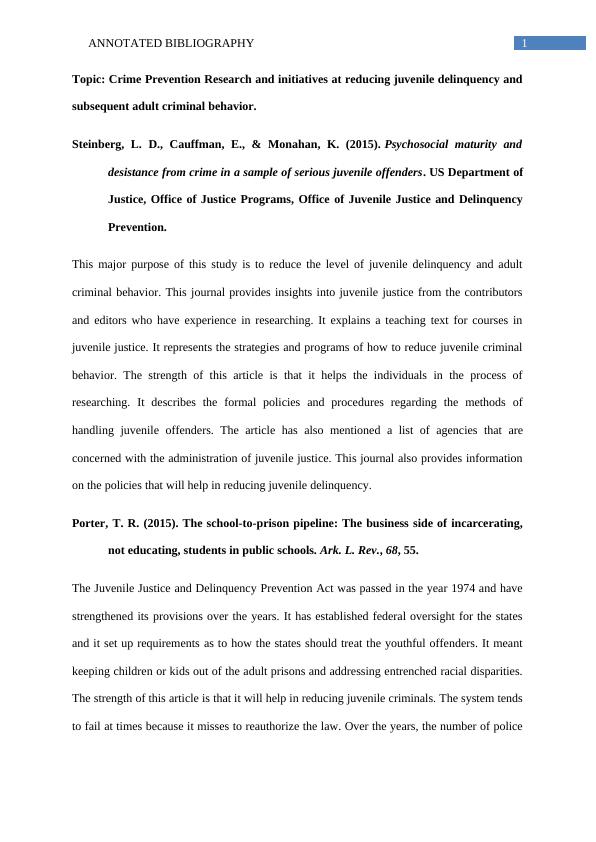Ask a question from expert
Assignment on Juvenile Delinquency | Annotated Bibliography
7 Pages1631 Words508 Views
Added on 2020-05-28
Assignment on Juvenile Delinquency | Annotated Bibliography
Added on 2020-05-28
BookmarkShareRelated Documents
End of preview
Want to access all the pages? Upload your documents or become a member.
The System of Juvenile Justice
|8
|1906
|17
The Different Types of Criminological Thought
|7
|1340
|49
Journal of Developmental and Life-Course Criminology
|3
|1322
|29
Youth Crime and Prevention in Canada
|5
|620
|95
Should Juvenile Offenders Be Tried and Punished in A Court of Law
|7
|570
|395
Assessment of theoretical and practical approaches to youth offending
|11
|3937
|73


